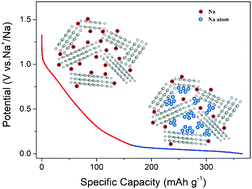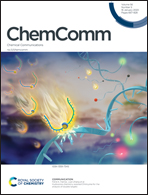Hard carbon micro-nano tubes derived from kapok fiber as anode materials for sodium-ion batteries and the sodium-ion storage mechanism†
Abstract
Hard carbon materials are considered as the most promising anode for sodium-ion batteries (SIBs). However, the high cost and poor rate performance hinder their application in SIBs. Moreover, the controversial mechanism of Na-ion storage restricts the improvement of hard carbon anodes. Herein, hard carbon micro-nano tubes (HCMNTs) from low-cost biomass kapok fibers are prepared as a promising anode for SIBs. Benefitting from the micro-nano structure, which offers low surface area and short Na+ diffusion path, 1400HCMNT possesses a good initial Coulombic efficiency of 80%, a high reversible capacity of 290 mA h g−1, and an excellent rate capacity. Furthermore, electron paramagnetic resonance and thermogravimetric analysis were applied to investigate the Na-ion storage mechanism in the HCMNTs. Sodium is stored in the hard carbon in an ionic state in the slope region and as quasi-liquid metallic sodium clusters in the low-voltage plateau.



 Please wait while we load your content...
Please wait while we load your content...